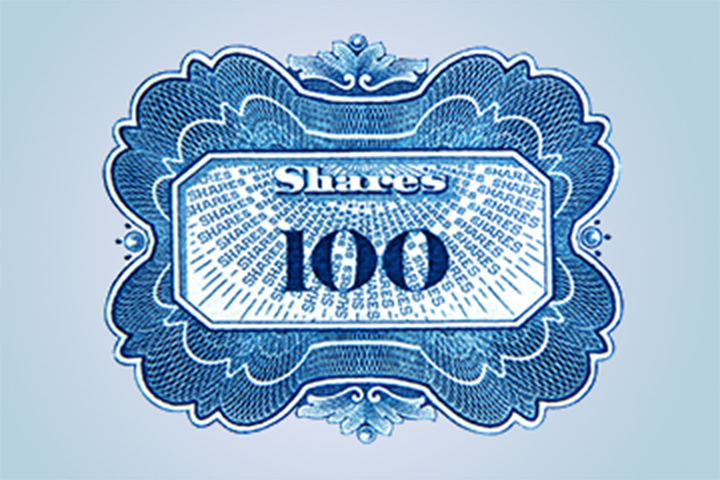Why (not) invest in micro-caps?

Keytrade Bank
keytradebank.be
December 22, 2021
(updated July 06, 2022)
5 minutes to read
1. What is a micro-cap?
You’ve likely heard of Amazon, Pfizer and Nestlé. But probably not yet of Happy Supplements Inc, Fluidigm and Peoples Financial Services Corp. Among the more than 40,000 listed companies there are thousands of small players around the edges. Both private and institutional investors tend not to, or only rarely, have them on their radar. This is because they are usually too small, too new or too speculative. There are also a handful of micro-caps listed on the Belgian stock exchange. For example, Campine, Fountain, Rosier and IEP Invest.
2. How large or how small is a micro-cap?
Depending on their market capitalisation (hence the abbreviation "cap"), shares can be divided into different classes. The largest are the mega-caps and large-caps, followed by the mid-caps and small-caps. Micro-caps, and finally nano-caps, bring up the rear.
From large to small:
- Mega cap: from USD 200 billion market capitalisation
- Large cap: between USD 10 and 200 billion
- Mid-cap: between USD 2 and 10 billion
- Small cap: between USD 300 million and 2 billion
- Micro-cap: between USD 50 and 300 million
- Nano-cap: less than USD 50 million
However, where the boundaries lie between one group and the next varies depending on who you ask. In the US, the above classifications are common. However, Euronext (which operates the Amsterdam, Brussels and Paris stock exchanges, among others) applies different thresholds for large caps (EUR 1 billion and above), mid-caps (EUR 250 million to 1 billion) and small caps (below EUR 250 million). They do not even have a separate category for micro-caps.
3. What is the appeal of micro-caps?
- Micro-caps are often too small for banks and fund managers to conduct their (expensive) research on and invest in them. This lack of tracking and attention can then lead to inefficient market pricing and undervaluation. Micro-caps are attractive to eagle-eyed investors because they may include some hidden gems.
- In the long term, micro-caps can outperform large businesses. Large companies with a strong market capitalisation have generally already completed their growth spurt and are more likely to be active in a slower growing environment. Some of the micro-caps are developing new products and services that may be at an early stage in their life cycle. Small businesses are also much more agile than larger ones: it is easier for a yacht to change course than a tanker. Micro-caps can grow faster because their products or services can capture market share or expand into new regions. E-commerce giant Shopify, for example, started as a micro-cap and is now a large cap.
- Micro-caps can be an attractive way for investors who want and are able to take a higher risk to add some interesting diversification to their portfolio.
- Micro-caps usually have fewer products, services, divisions, regions and competitors... which means that it may take less time to research their activities. As an investor, you can often get access directly to the CFO or even the CEO, which is generally not possible in larger companies. Members of the management team are sometimes major shareholders, which indicates a strong commitment.
- There are many more potential buyers for small businesses than for large ones. Companies such as Apple or Alphabet are not direct takeover targets, but life is different for micro-caps, and may offer the prospect of a takeover premium.
4. What are the risks?
- The fact that they are under-analysed is not always an advantage, it can also be a disadvantage. Their financial history is often minimal, and management is not always equally experienced. Because there is hardly any research, you have to do your own homework in order to pick out the potential winners.
- The rewards can be great if things move in the right direction, but the loss can be just as great if things head in the wrong direction. Micro-caps often operate in niches or rapidly changing sectors. The prospect of higher growth goes hand-in-hand with an increased risk of failure. While you can be relatively sure that companies like Coca-Cola, ASML or Novo Nordisk will still exist in 2023, you will not have as much certainty about a micro-cap.
- Micro-caps that are still at an embryonic stage can burn a lot of cash in order to finance their growth. For investors, therefore, there is a risk of dilution or additional investments.
- Their liquidity is limited. Since there are generally few buyers and sellers, the difference between the bid price and the ask price can grow sharply. It is quite possible that the share will not be traded for days, weeks or even months. This can of course be a major problem if you want to sell quickly.
- Micro-cap volatility may be higher than small, mid- and large caps. Investing in micro-caps means that you will have to factor in severe price swings.


